The 8 Best Exercises for Building Bigger & Stronger Lats
There’s a very simple reason most people struggle to build strong, wide, well-developed lats: they do the wrong lat exercises.
Search the internet for the best lat exercises, and you’ll find a bewildering number of articles and videos about lat training, often claiming that the best way to grow your lats is with “quirky” exercises like renegade rows, bodyweight supermans, and towel lat pulldowns.
This is blatherskite.
You only need a handful of effective lat exercises to build the back you want.
In this article, you’ll learn what those exercises are, why they’re so effective, and how to include them in your workouts.
- The Anatomy of the Lat Muscles
- The Simple Science of Effective Lat Training
- 1. Use a mix of vertical and horizontal pulling exercises.
- 2. Use effective weightlifting cues.
- 3. Emphasize progressive overload.
- The Best Lat Exercises
- 1. Deadlift
- 2. Pull-up
- 3. Chin-up
- 4. Barbell Row
- 5. One-Arm Dumbbell Row
- 6. Seated Cable Row
- 7. Lat Pulldown
- 8. Standing Lat Pushdown
- The Ultimate Lat Workout
- 3 Tips for More Productive Lat Workouts
- 1. End every set 1-to-2 reps shy of muscle failure.
- 2. Once you hit the top of your rep range for one set, move up in weight.
- 3. Take the right supplements.
- FAQ #1: What are the best lower lat exercises and upper lat exercises?
- FAQ #2: Can you do lat exercises at home?
- FAQ #3: Are “wide lat exercises” and “thick lat exercises” different?
- FAQ #4: What are the best lat exercises with dumbbells?
- FAQ #5: What are the best lat exercises for women?
Table of Contents
The Anatomy of the Lat Muscles
The latissimus dorsi, or “lat” is a large, flat muscle that starts at the base of the spine, wraps around the side of the torso, and connects to the upper arm.
Here’s what it looks like:
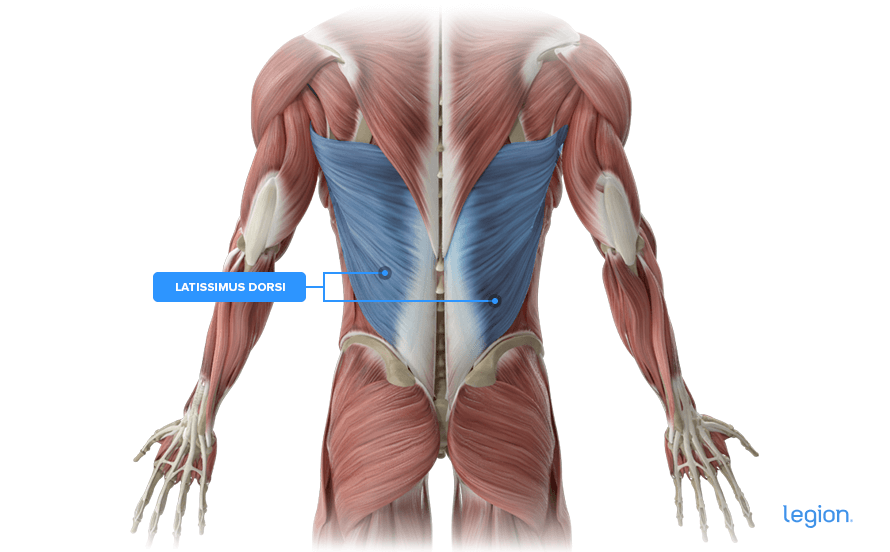
You have two lat muscles, one on either side of your body, which is why they’re usually referred to as “the lats.”
The lats are involved in all kinds of upper-body movements, though their main functions include shoulder adduction (pulling your upper arms from out at your sides closer to your torso) and shoulder extension (moving your arms from out in front of you closer to your torso).
They also help stabilize your upper body during exercises like the overhead press, bench press, and squat.
When the lats are well developed, they look like a pair of wings on either side of your torso and contribute to the “V-taper” look many people aspire to have (the other two components of this look are maximal shoulder development and minimal belly fat).
Here are some examples of men and women who developed their lats using my Bigger Leaner Stronger and Thinner Leaner Stronger programs:
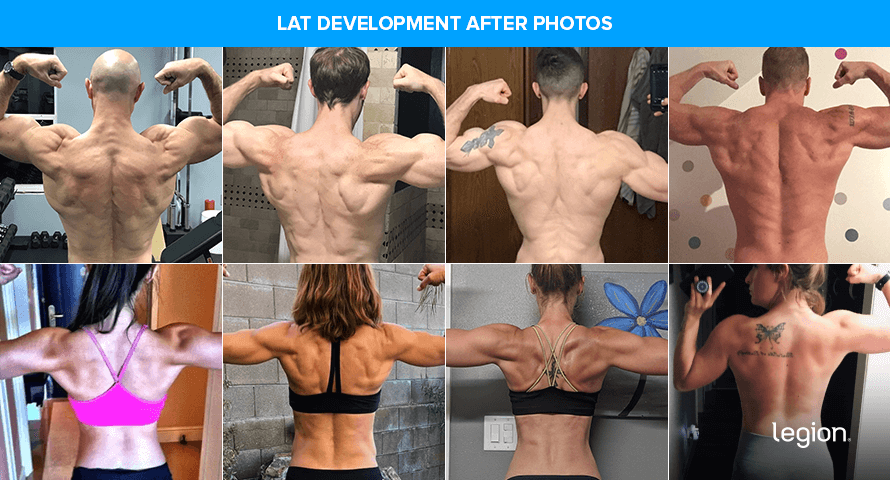
The Simple Science of Effective Lat Training
1. Use a mix of vertical and horizontal pulling exercises.
Many people think the best way to train your lats is with vertical pulling exercises like the pull-up, chin-up, and lat pulldown.
And while there’s no denying that these are among the best lat exercises, only doing vertical pulling exercises is not the best way to make your lats wider.
Research shows that horizontal pulling exercises like the barbell, dumbbell, and cable row are just as effective as vertical pulling exercises for training your lats.
What’s more, including exercises like horizontal pulls in your program helps you train your lats in different directions and at different angles, which research shows produces more growth than training them in just one or two ways.
Thus, if you want to optimize your lat development, make sure you include a mix of vertical and horizontal pulling exercises in your program (like I do in my Bigger Leaner Stronger program for men, and Thinner Leaner Stronger program for women).
2. Use effective weightlifting cues.
Many people struggle to feel their lats working during back exercises, and instead feel like their biceps, traps, or forearms are bearing the brunt of the load.
Scientists at the University of South Carolina Upstate may have discovered a simple fix to this common problem, though: use effective weightlifting cues.
In this study, participants were able to quiet their biceps and increase lat activation when the researchers gave them a few simple cues that encouraged them to pull with their back muscles rather than their arms.
(The researchers also found that “palpating” or tapping the participants’ lats during a set helped the participants focus on their lats. Of course, this often isn’t possible if you train alone, but it can be a useful way to establish a “mind-muscle connection” if you have a willing training partner. You may also be able to get similar benefits by tapping your lats immediately before a set, a trick espoused by the writer Lyle McDonald over a decade ago.)
My two favorite cues for increasing lat activation on vertical pulling exercises are:
- “Pull your elbows into the floor.”
- “Tuck your shoulder blades into your back pockets.”
And my favorite cue for increasing lat activation on horizontal pulling exercises when your torso is parallel to the floor, like the barbell row or dumbbell row, is “slam your elbows into the ceiling.”
3. Emphasize progressive overload.
If you stop getting stronger, your lats will eventually stop getting bigger (this applies to every major muscle group in the body).
The best way to get strong and build muscle is to ditch the high-rep “pump” training and lift heavy.
By “heavy,” I mean doing most of your exercises with weights in the range of 75-to-85% of your one-rep max (1RM), or in the range of 8-to-10 (~75%) to 4-to-6 (~85%) reps.
You should also strive to add weight or reps to every exercise in every workout. This is known as progressive overload, and it’s one of the best ways to maximize the muscle-building effects of weightlifting.
The Best Lat Exercises
You can find countless lists of lat exercises online, but most of them are hokum.
Here are the eight best lat exercises for mass.
1. Deadlift
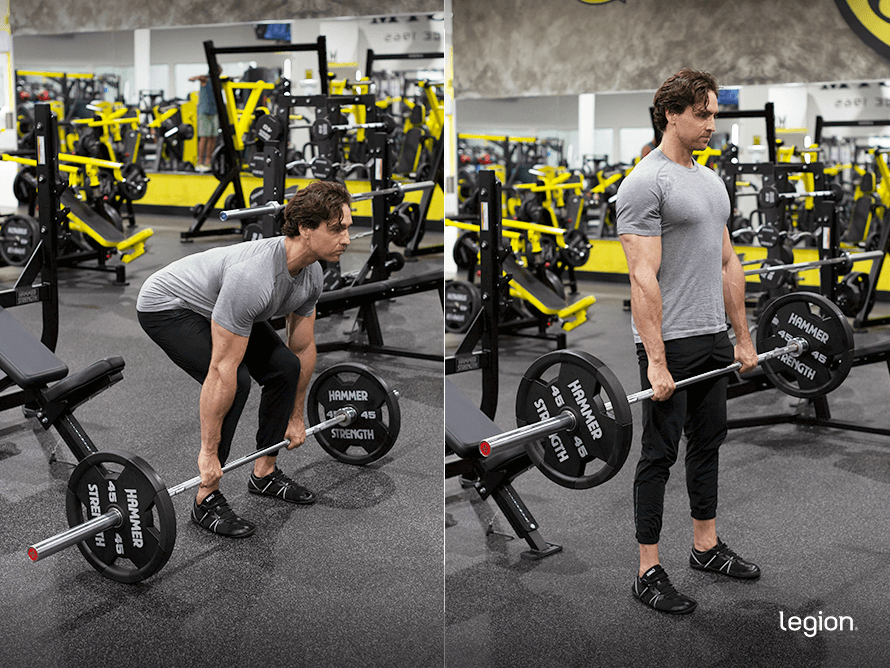
The deadlift is hands down the best all-around back exercise you can do because it trains every muscle in your posterior chain (the muscles on the back side of your body), including the lats. It also allows you to use some of the heaviest weights in any of your workouts, which means it’s ideal for gaining strength and muscle.
Tip: If you want to maximize lat involvement during the deadlift, imagine crushing oranges in your armpits as you perform the exercise. This ensures your lats stay engaged throughout the exercise and helps you get your upper body into the proper position before you pull, which helps you lift more weight.
2. Pull-up
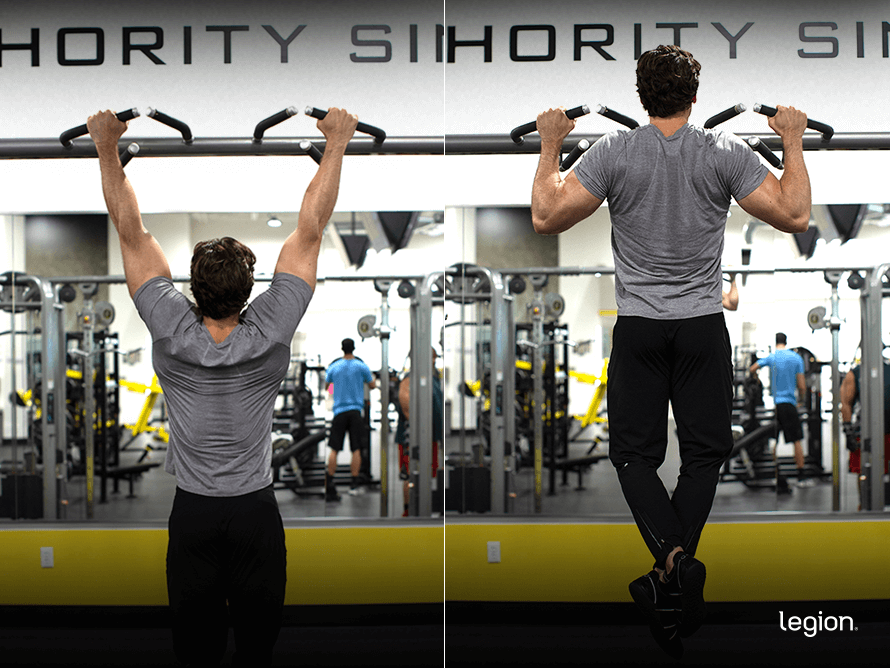
Research shows that the pull-up trains almost every muscle in your back, but it’s particularly good at hitting the lats. What’s more, it also trains your biceps, abs, and even your chest muscles to a lesser extent.
3. Chin-up

Like the pull-up, the chin-up is one of the best lat exercises you can do. The main difference between the two exercises is that the chin-up trains your biceps slightly more than the pull-up, whereas the pull-up trains your lower-traps a little more than the chin-up.
4. Barbell Row
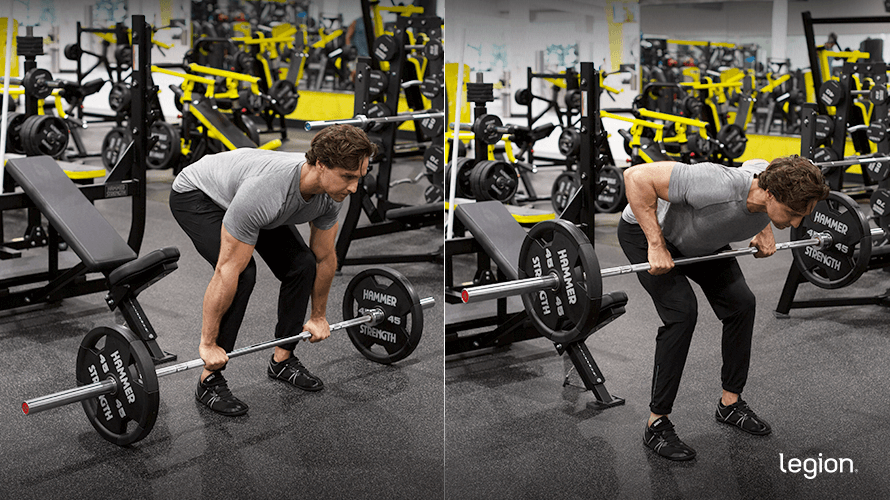
Because you use a bit of leg drive to get the bar moving, you can generally lift more weight with the barbell row than you can with other back exercises. This is one of the reasons research shows that the barbell row is highly effective for training all of your back muscles, including your lats.
5. One-Arm Dumbbell Row
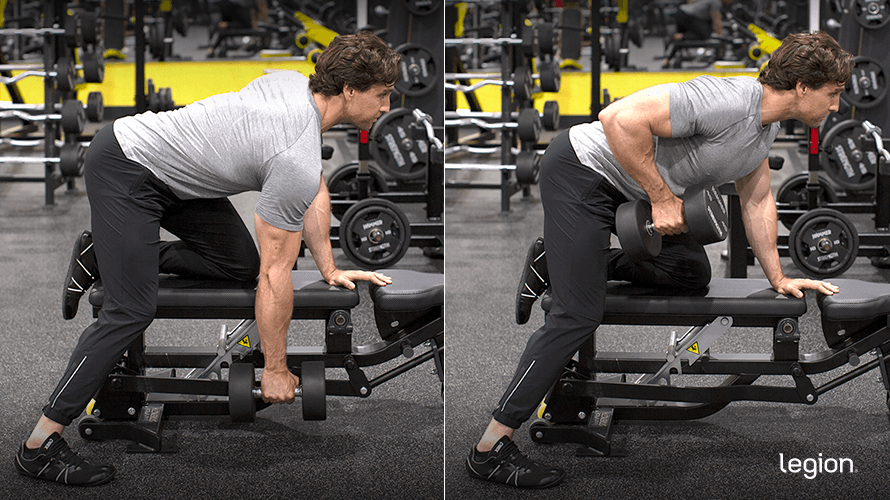
The main benefits of the one-arm dumbbell row are that it trains each side of your body independently and that you use a bench for support. This means you can lift more weight per side than you can when you do barbell rows, which is generally better for muscle growth.
6. Seated Cable Row

Research shows that the cable row is as effective as the barbell row for training your lats. What makes it slightly different, though, is that by using a cable, there’s constant tension on your muscles throughout each rep, which taxes your back muscles slightly differently to other free-weight lat exercises.
7. Lat Pulldown
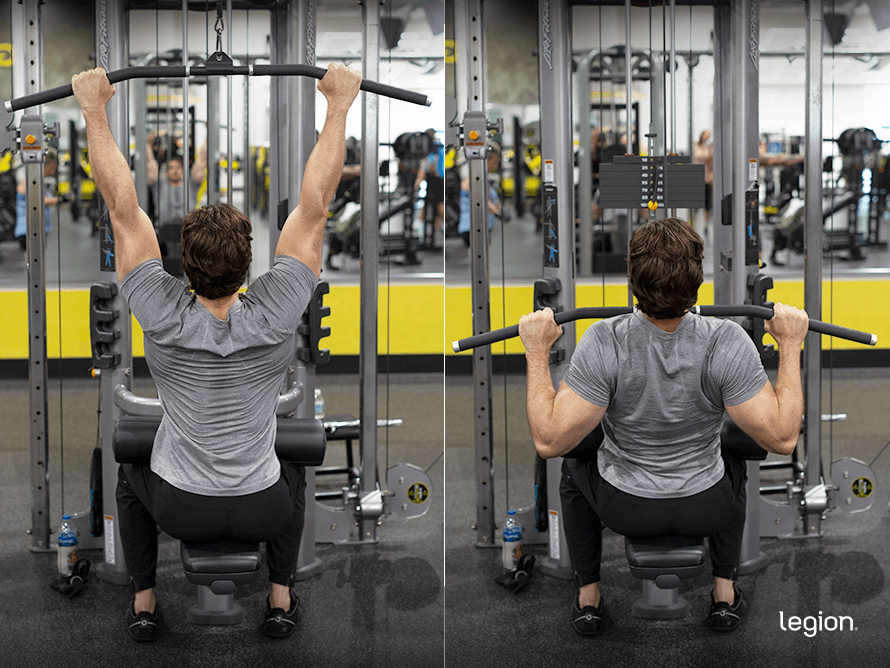
Studies show that the lat pulldown trains every muscle in your back, and is particularly effective at training the lats (according to research, just as effective as the pull-up, in fact).
Tip: Despite what some “experts” say, excessively widening your grip on the lat pulldown won’t emphasize your lats. Research shows that taking a slightly wider than shoulder-width grip with your palms facing away from you and pulling the bar to your chest rather than behind your neck is the best way to train your lats.
8. Standing Lat Pushdown
View this post on Instagram
The standing lat pushdown is a fantastic cable lat exercise because it trains your lats through shoulder extension (moving your arms from out in front of you to either side of your torso and beyond), which research shows is ideal for maximally activating your lats. It also trains your lats through a full range of motion and in a stretched position, which is generally superior for muscle growth.
The Ultimate Lat Workout
This back workout contains the perfect mix of vertical and horizontal pulling exercises to train all the major muscles of the upper and lower back, and particularly emphasizes the lats.
Do this workout once every five-to-seven days for the next eight weeks and see how your body responds. I think you’ll be pleasantly surprised:
- Deadlift: 3 sets of 4-to-6 reps with 2-to-3 min rest
- One-Arm Dumbbell Row: 3 sets 4-to-6 reps with 2-to-3 min rest
- Pull-up: 3 sets 6-to-8 reps with 2-to-3 min rest
- Seated Cable Row: 3 sets of 8-to-10 reps with 2-to-3 min rest
- Standing Lat Pushdown: 3 sets of 8-to-10 reps with 2-to-3 min rest
3 Tips for More Productive Lat Workouts
1. End every set 1-to-2 reps shy of muscle failure.
In order to maximize muscle and strength gains, you need to take most of your sets close (but not all the way) to muscle failure, which is the point at which you can’t complete a rep despite giving maximum effort.
To ensure you’re taking your sets close enough to failure, ask yourself this question at the end of each set, just before re-racking the weight: “If I absolutely had to, how many more reps could I get with good form?”
If the answer is more than two, then you should increase the weight or reps to make your next set more challenging. This ensures you’re including the right balance of volume and intensity in your workouts.
2. Once you hit the top of your rep range for one set, move up in weight.
For instance, let’s say your workout calls for 4-to-6 reps of deadlift (as this one does). If you get 6 reps for a set, add 5 pounds to each side of the bar (10 pounds total) for your next set and work with that weight until you can (eventually) pull it for 6 reps, and so forth.
If you get 3 or fewer reps with your new (higher) weight on your next sets, reduce the weight by 5 pounds to ensure you can stay within your target rep range (4-to-6) for all sets.
Follow this same pattern of trying to add reps or weight to every exercise in every workout. This method is known as double progression, and it’s a highly effective way to get fitter and stronger.
3. Take the right supplements.
You don’t need to take any supplements to gain muscle and strength, but the right ones can help (and if you’d like specific advice about exactly what supplements to take to reach your fitness goals, take the Legion Supplement Finder Quiz).
Here are the best supplements for supporting your back workouts:
- 0.8-to-1.2 grams of protein per pound of body weight per day. This provides your body with the “building blocks” it needs to build and repair muscle tissue and help you recover from your workouts. If you want a clean, convenient, and delicious source of protein, try Whey+ or Casein+.
- 3-to-5 grams of creatine per day. This will boost muscle and strength gain, improve anaerobic endurance, and reduce muscle damage and soreness from your workouts. If you want a 100% natural source of creatine that also includes two other ingredients that will help boost muscle growth and improve recovery, try Recharge.
- One serving of Pulse per day. Pulse is a 100% natural pre-workout drink that enhances energy, mood, and focus; increases strength and endurance; and reduces fatigue. You can also get Pulse with caffeine or without.
FAQ #1: What are the best lower lat exercises and upper lat exercises?
No exercises target the lower portion of the lats over the upper portion or vice versa.
Thus, there’s no such thing as a “lower lat exercise” or “upper lat exercise.”
Instead of trying to target specific regions of the lats, focus on developing the lats as a whole using the exercises and workout in this article.
FAQ #2: Can you do lat exercises at home?
Yes.
Most at-home lat exercises fall into two categories: bodyweight lat exercises and resistance band lat exercises.
The best bodyweight lat exercises are the . . .
- Pull-up
- Chin-up
- Inverted row
And the best lat exercises with bands are the . . .
- Banded lat pulldown
- Banded horizontal row
Here’s an at-home lat workout that includes these exercises:
- Pull-up: 3 sets of 8-to-10 reps with 2-to-3 min rest
- Inverted Row: 3 sets of 10-to-20 reps with 2-to-3 min rest
- Banded Lat Pulldown: 3 sets of 10-to-20 reps with 2-to-3 min rest
- Banded Horizontal Row: 3 sets of 10-to-20 reps with 2-to-3 min rest
FAQ #3: Are “wide lat exercises” and “thick lat exercises” different?
No.
According to the old bodybuilding adage, you should do vertical pulling exercises to develop your lats to add back width, and horizontal pulling exercises to develop your traps, rhomboids, and teres muscles to add back thickness.
However, this isn’t based on any sound scientific reasoning. In fact, studies show that horizontal pulling exercises train your lats (the muscles that are responsible for giving your back width) just as well as—if not slightly better than—vertical pulling exercises.
That’s why you shouldn’t focus on certain exercises for width and others for “thickness.” Instead, do a variety of vertical and horizontal pulling exercises in your back workouts.
FAQ #4: What are the best lat exercises with dumbbells?
The best dumbbell lat exercises include the . . .
- One-arm dumbbell row
- Dumbbell deadlift
- Dumbbell seal row
- Kroc row
- Dumbbell pullover
FAQ #5: What are the best lat exercises for women?
Men’s and women’s anatomies are very similar, so the best lat exercises for women are the same as the best lat exercises for men (which is why my programs for men and women contain the same back exercises).
Thus, whether you’re a man or woman, you can use the lat exercises shared in this article.
The post The 8 Best Exercises for Building Bigger & Stronger Lats appeared first on Legion Athletics.
https://ift.tt/62Hj0vd April 20, 2022 at 06:00PM Legion Athletics
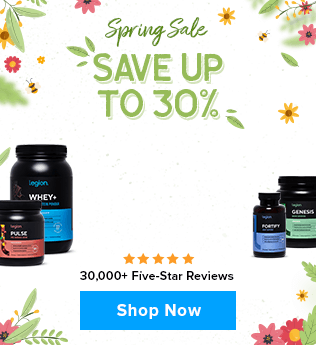
Comments
Post a Comment